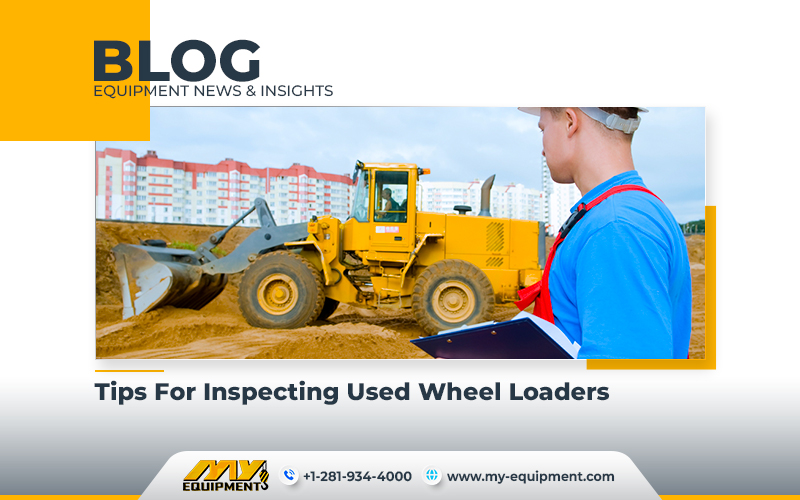If you have been looking to purchase used loaders you need to first evaluate the wheel loader you want to buy. Even if you know the model and size of the loader you will need for the job, you still need to find out other details. For one, the wheel loader’s service history should be documented by a dealer, which also describes the machine’s previous applications. Also, the loader should be given a thorough inspection and taken for a test drive.
Examine The History Of Service And Maintenance
The maintenance and service history of a used wheel loader is one of the first things for you to look into. A reputable dealer will know when the equipment was last serviced and what kind of maintenance was done to it. Since these guidelines can help to increase a wheel loader’s lifespan, you should make sure the previous owners followed them. You might have more faith in a used wheel loader’s dependability if it has a history of preventative maintenance and inspections.
Verify That Major Areas Were Properly Inspected
You should be certain that the equipment you purchase is in fact cost-effective. You will be welcome for an impartial inspection of the wheel loader at any respectable dealership. You can check the wheel loader’s primary components for damage as you do the inspection.
Check the front of the bucket to see that all of the teeth are firmly fastened. Next, you need to examine the side panels and leading edge for any damage. Check for any damaged bushings or loosened pins if your wheel loader is attached via a coupling method. Lastly, look for any kind of damage on the lift arm cylinders and lift arm arms.
Cab
You should inspect the cab because your operators will be spending a lot of time in there. Verify the condition of the seat, foot pedals, joysticks, and any other controls or technological components. Take note of the hour meter’s reading. Start the wheel loader and make sure the gauges are operational.
Frame
Roll Over Protection Structures are available with several wheel loader models. If the machine you are considering has one, you should check it to determine if there are any flaws that might endanger your operator if the wheel loader rolled over. Check the sliding screens to ensure they are fastened to the frame and are in good condition.
Hydraulic system
When purchasing a used wheel loader, the hydraulic system is probably one of the most important items to check for. Look out for cracked or broken hose connections and damaged hoses as well as damaged cylinders. Examine the cylinders for dents, scratches, or leaks that can let impurities into the system or cause fluid to seep out.
Engine
Check the engine for any leaks or loose belts. Also, check the air filter to verify when it was last serviced. The midway of the underside of the cab is where the center articulation point is, that’s is where you need to check for wear and damage. The top and bottom pins may move up and down while operating if the articulation point has sustained severe damage.
Wheels, tires, and rims
Check the metal of the rims for structural flaws such as dents, rust, or fractures. You can also look for any simple wear or damage in the tread of the tires.
Determine how it was used
Understanding how a wheel loader has been utilized in the past can actually improve your ability to anticipate how long the machine will last. Ask about the former owner of the equipment and whether it was used to handle particularly heavy or abrasive materials. To find out how frequently the former owner used the wheel loader, ask if it was just used on the weekends or if it was also used during the week. Your knowledge of the machine’s usage will help you determine how dependable it will be.
A Test Drive With The Wheel Loader
Before making a purchase, try to always test drive the wheel loader. On this test run, you may learn everything and get a feel for how it handles load. You can also test your ability to smoothly change through all the gears during this test drive. Plus, you can see the low and high engine RPMs and check for any inconsistencies in components like the bucket link or center articulation joints. A test drive is needed at time because problems like these can mean you will probably need to pay for repairs soon.


 1400 Broadfield Blvd, Houston, TX 77084,
USA.
1400 Broadfield Blvd, Houston, TX 77084,
USA.